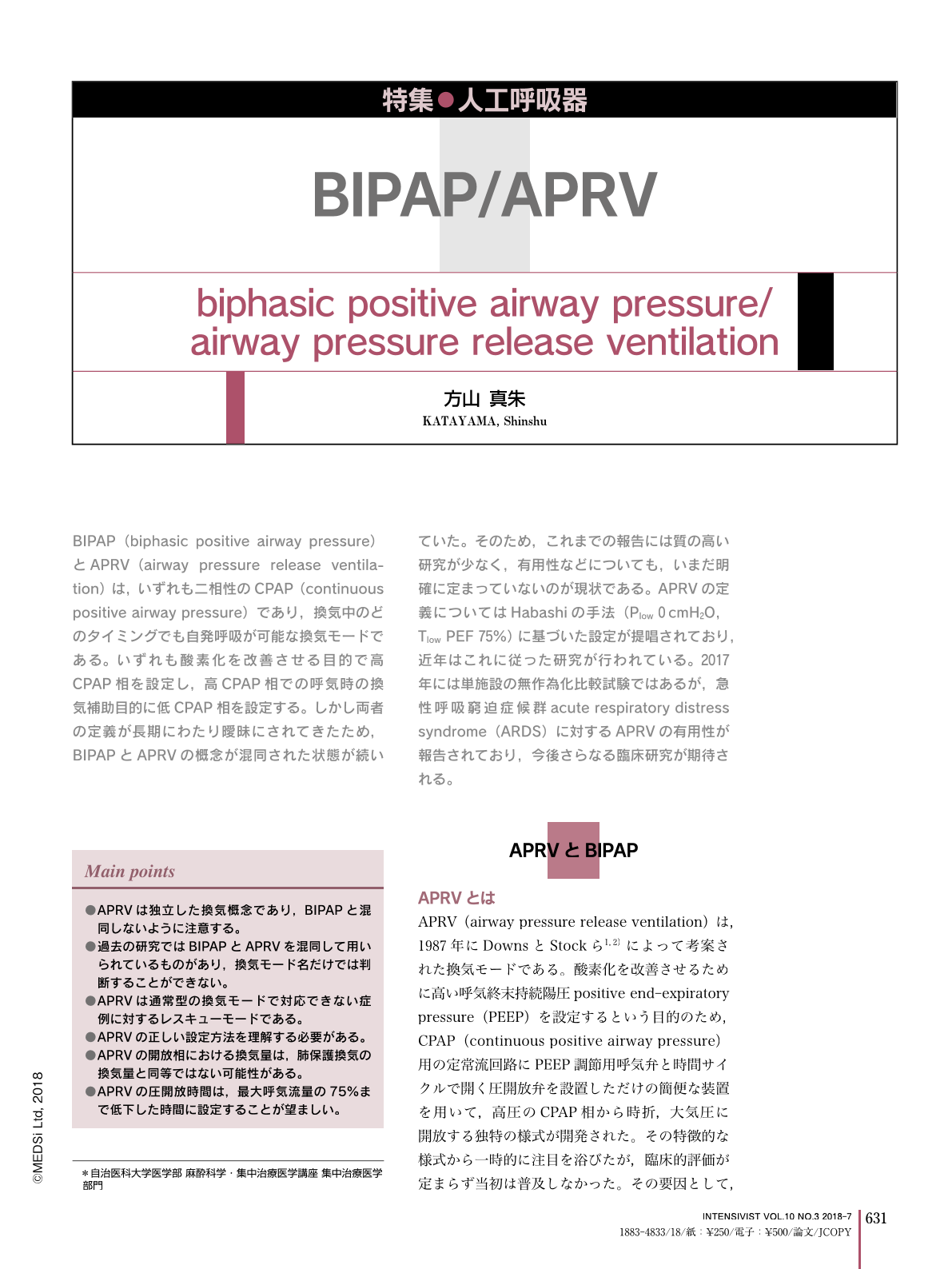Japanese
English
- 有料閲覧
- Abstract 文献概要
- 1ページ目 Look Inside
- 参考文献 Reference
BIPAP(biphasic positive airway pressure)とAPRV(airway pressure release ventilation)は,いずれも二相性のCPAP(continuous positive airway pressure)であり,換気中のどのタイミングでも自発呼吸が可能な換気モードである。いずれも酸素化を改善させる目的で高CPAP相を設定し,高CPAP相での呼気時の換気補助目的に低CPAP相を設定する。しかし両者の定義が長期にわたり曖昧にされてきたため,BIPAPとAPRVの概念が混同された状態が続いていた。そのため,これまでの報告には質の高い研究が少なく,有用性などについても,いまだ明確に定まっていないのが現状である。APRVの定義についてはHabashiの手法(Plow 0cmH2O,Tlow PEF 75%)に基づいた設定が提唱されており,近年はこれに従った研究が行われている。2017年には単施設の無作為化比較試験ではあるが,急性呼吸窮迫症候群acute respiratory distress syndrome(ARDS)に対するAPRVの有用性が報告されており,今後さらなる臨床研究が期待される。
Main points
●APRVは独立した換気概念であり,BIPAPと混同しないように注意する。
●過去の研究ではBIPAPとAPRVを混同して用いられているものがあり,換気モード名だけでは判断することができない。
●APRVは通常型の換気モードで対応できない症例に対するレスキューモードである。
●APRVの正しい設定方法を理解する必要がある。
●APRVの開放相における換気量は,肺保護換気の換気量と同等ではない可能性がある。
●APRVの圧開放時間は,最大呼気流量の75%まで低下した時間に設定することが望ましい。
Biphasic positive airway pressure (BIPAP) and airway pressure release ventilation (APRV) are ventilator modes using biphasic continuous positive airway pressure (CPAP), which ventilate by time-cycled switching between two pressure levels with a high-low valve. This allows unrestricted spontaneous breathing in any phase of the ventilator cycle with a demand valve. High pressure levels are applied to improve oxygenation while the pressure is periodically released to low levels to assist ventilation. Since the definitions of BIPAP and APRV are indistinct and few studies of these two modes have been published, the potential benefits of these modes have not been realized. Recently, a definition of APRV was proposed by Habashi (PLow 0cmH2O, TLow=PEF 75%), which was used in several clinical studies. In 2017, a single-center randomized controlled trial was conducted, showing the efficacy of APRV in patients with ARDS. Further clinical studies are warranted to evaluate the efficacy and validity of these modes.

Copyright © 2018, MEDICAL SCIENCES INTERNATIONAL, LTD. All rights reserved.


